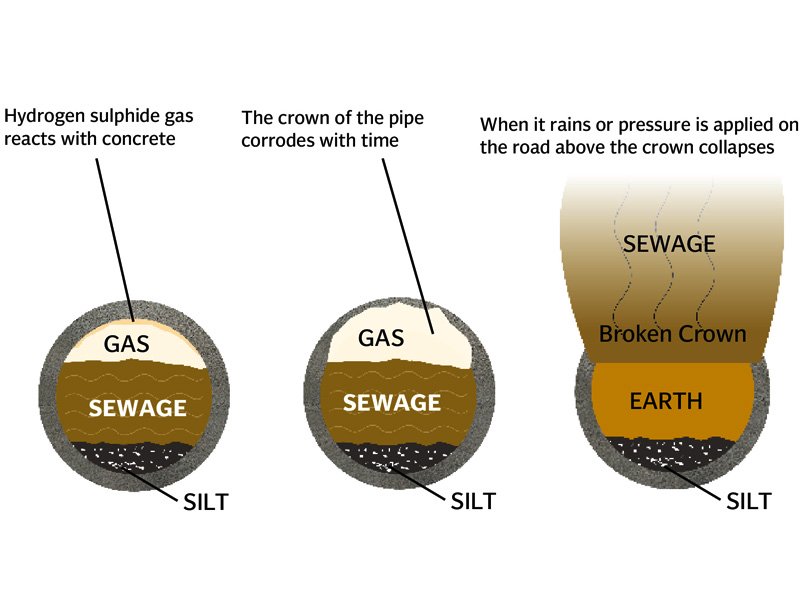
This is why PVC pipes instead of concrete ones are recommended by Jawed Shamim of the Karachi Water & Sewage Board. He manages its internal reform programme but has worked as an engineer across the city for 27 years.

“This is why you hear of stories from Landhi and Korangi that a whole household was nearly killed while sleeping when their house caved in because the sewage line collapsed underneath,” he said, referring to the risk slums are at by building over sewers. Shamim was sharing his experiences during a workshop to discuss the draft of the new Sindh sanitation policy being prepared by the urban policy and strategic planning department on Tuesday.
He recalls a time when he was driving somewhere and the road caved in because a sewer had collapsed. The truck he called to fix the problem also sank into the crater because of the extent of the sewer collapse.
A certain amount of space needs to be left in a sewer to factor in these corrosive gases. But according to Shamim, our urban growth has put immense pressure on this infrastructure. “The crown of the sewer should remain open for gases,” he said. This means that the pipeline should have sewage flowing through only two-thirds of it. But in places like Azizabad blocks 2 and 3, 120-square yard plots which were supposed to have maybe six people, have been bifurcated into 60 sq yard plots. “Up to 40 people overload the sewer system so there is an overflow,” he explained.
But be advised against going overboard and installing too big a pipeline, he added. Sometimes politicians come to the KWSB and demand big 24-inch pipelines where a 12-inch one works. “We then need to explain to them the technicalities that this is a bad idea,” said Shamim. Sewers are self-cleaning. They have to be the right size so that the sewage flows at a velocity of up to 3.5ft/sec. If the sewage doesn’t flow at this rate, silt tends to deposit and eventually clog the pipe. If you forcibly choose an oversized pipe (depending on the amount of sewage the abadi will produce for it) the sewage won’t flow fast enough.
Also be careful about the contractor cutting corners and not laying the sewage pipeline at the right gradient or slope. “Technical chori ho rahi he,” said Shamim. “Engineers don’t go to the site and leave the work for the [labour].” When he was the chief engineer of Gulberg Town, he was working on laying sewers from Karimabad to Sohrab Goth. It was a slow process because the gradient had to be measured properly. But one day he made the mistake of going off for lunch after eating for weeks on site. Upon his return he found that they had quickly laid three pipelines in the time it should have taken for one. All the slopes were wrong by five inches. He made them uproot them all and fix the problem. Sometimes even five inches makes a huge difference.
Published in The Express Tribune, June 25th, 2014.






1732783305-0/Untitled-design-(6)1732783305-0-270x192.webp)










COMMENTS
Comments are moderated and generally will be posted if they are on-topic and not abusive.
For more information, please see our Comments FAQ